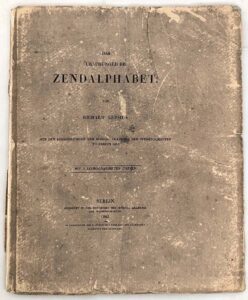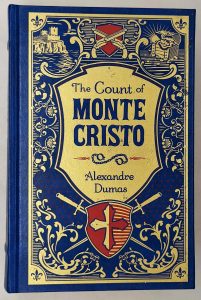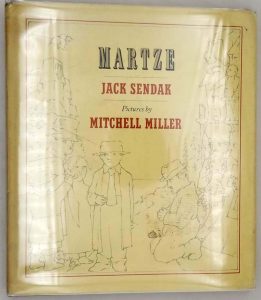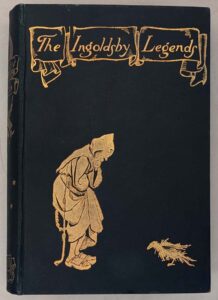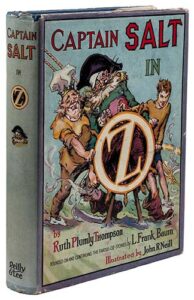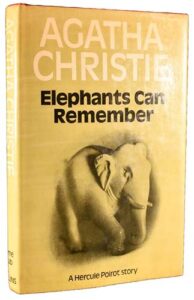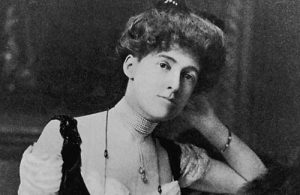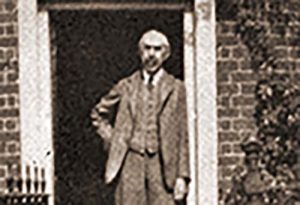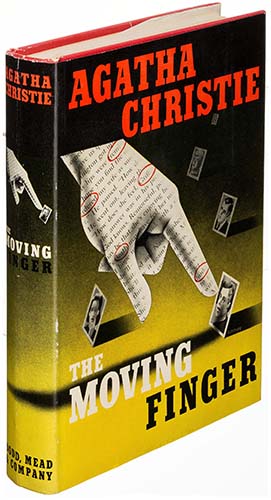
The Moving Finger is a detective novel by British writer Agatha Christie, first published in the USA by Dodd, Mead and Company in July 1942 and in the UK by the Collins Crime Club in June 1943. The US edition retailed at $2.00 and the UK edition at seven shillings and sixpence.
The Burtons, brother and sister, arrive in the small town (or village) of Lymstock in Devon, and soon receive an anonymous letter accusing them of being lovers, not siblings. They are not the only ones in the village to receive such letters. A prominent resident is found dead with one such letter found next to her. This novel features the elderly detective Miss Marple in a relatively minor role, “a little old lady sleuth who doesn’t seem to do much”. She enters the story in the final quarter of the book, in a handful of scenes, after the police have failed to solve the crime.
The book takes its name from quatrain 51 of Edward FitzGerald’s translation of the Rubáiyát of Omar Khayyám:
The Moving Finger writes; and, having writ, Moves on: not all thy Piety nor Wit Shall lure it back to cancel half a Line, Nor all thy Tears wash out a Word of it.
The poem, in turn, refers to Belshazzar’s feast as related in the Book of Daniel, where the expression the writing on the wall originated.
The title shows in the story figuratively and literally. The anonymous letters point blame from one town resident to another. The police detective determines that the envelopes were all “typed by someone using one finger” to avoid a recognisable ‘touch’.
Plot Summary
[SPOILER ALERT]
Jerry and Joanna Burton, a brother and sister from London, take up residence in a house owned by Miss Barton near the quiet town of Lymstock for the last phase of Jerry’s recovery from injuries suffered in a plane crash. Shortly after moving in and meeting their neighbours, they receive an anonymous letter which makes the false accusation that the pair are lovers, not siblings.
The Burtons quickly learn that such poison pen letters have been received by many in the town. Despite the letters containing false accusations, many recipients are upset by them and fear something worse may happen. Mrs Symmington, the local solicitor’s wife, is found dead after receiving a letter stating that her husband, was not the father of her second son. Her body is discovered with the letter, a glass containing potassium cyanide, and a torn scrap of paper that reads, “I can’t go on.”
While the inquest rules that her death was suicide, the police begin a hunt for the anonymous letter writer. An inspector arrives from Scotland Yard to help with the investigation. He concludes that the letter writer is a middle-aged woman among the prominent citizens of Lymstock. Mrs Symmington’s daughter by a previous marriage, Megan Hunter, an awkward, frumpy 20-year-old, stays with the Burtons for a few days after losing her mother.
The Burtons’ housekeeper, Partridge, receives a call from Agnes, the Symmingtons’ maidservant, who is distraught and seeks advice. Agnes fails to arrive for their planned meeting; nor is she found at the Symmingtons’ when Jerry calls in the evening to check on her. The following day, her body is discovered by Megan in the under-stairs cupboard at the Symington house.
Progress in the murder investigation is slow until the Reverend’s wife, Mrs. Dane Calthrop, invites Miss Marple to investigate. Jerry conveys many facts about the case to her from his observations, and tells her some of his ideas on why Agnes was killed. Meanwhile, Elsie Holland, the governess for the Symmington boys, receives an anonymous letter. The police observe Aimée Griffith, sister of the local doctor Owen Griffith, typing the address on the same typewriter used for all the previous letters, and arrest her for writing the letter.
Heading to London to see his doctor, Jerry impulsively takes Megan along with him and takes her to Joanna’s dressmaker for a complete makeover. He realises he has fallen in love with Megan. When they return to Lymstock, Jerry asks Megan to marry him; she turns him down. He asks Mr Symmington for his permission to pursue Megan. Miss Marple advises Jerry to leave Megan alone for a day, as she has a task for her.
Megan blackmails her stepfather later that evening, implying that she has proof that he killed Mrs. Symmington. Mr. Symmington coolly pays her an initial instalment of money while not admitting his guilt. Later in the night, after giving Megan a sleeping drug, he attempts to murder her by putting her head in the gas oven. Jerry and the police are lying in wait for him. Jerry rescues Megan, and Symmington confesses. The police arrest him for murdering his wife and Agnes.
Miss Marple, knowing human nature, reveals that she knew all along that the letters were a diversion, and not written by a local woman, because none contained true accusations – something locals would be sure to gossip about. Only one person benefited from Mrs Symmington’s death: her husband. He is in love with the beautiful Elsie Holland. Planning his wife’s murder, he modelled the letters on those in a past case known to him from his legal practice. The police theory about who wrote them was completely wrong. The one letter that Symmington did not write was the one to Elsie; Aimée Griffith, who had been in love with Symmington for years, wrote that. Knowing it would be hard to prove Symington’s guilt, Miss Marple devised the scheme to expose him, enlisting Megan to provoke him to attempt to kill her.
Following the successful conclusion of the investigation, Megan realises that she does love Jerry. Jerry buys Miss Barton’s house for them. His sister Joanna marries Owen Griffith and also stays in Lymstock. Meanwhile, Emily Barton and Aimée Griffith go on a cruise together.
Publication history
- 1942, Dodd Mead and Company (New York), July 1942, Hardcover, 229 pp
- 1943, Collins Crime Club (London), June 1943, Hardcover, 160 pp
- 1948, Avon Books, Paperback, 158 pp (Avon number 164)
- 1948, Pan Books, Paperback, 190 pp (Pan number 55)
- 1953, Penguin Books, Paperback, 189 pp (Penguin number 930)
- 1961, Fontana Books (Imprint of HarperCollins), Paperback, 160 pp
- 1964, Dell Books, Paperback, 189 pp
The novel’s first true publication was the US serialisation in Collier’s Weekly in eight instalments from 28 March (Volume 109, Number 13) to 16 May 1942 (Volume 109, Number 20) with illustrations by Mario Cooper.
The UK serialisation was as an abridged version in six parts in Woman’s Pictorial from 17 October (Volume 44, Number 1136) to 21 November 1942 (Volume 44, Number 1141) under the slightly shorter title of Moving Finger. All six instalments were illustrated by Alfred Sindall.
This novel is one of two to differ significantly in American editions (the other being Three Act Tragedy), both hardcover and paperback. Most American editions of The Moving Finger have been abridged by about 9000 words to remove sections of chapters, and strongly resemble the Collier’s serialisation which, mindful of the need to bring the magazine reader into the story quickly, begins without the leisurely introduction to the narrator’s back-story that is present in the British edition, and lacks much of the characterisation throughout.
Christie admitted that this book was one of her favourites, stating, “I find that another [book] I am really pleased with is The Moving Finger. It is a great test to re-read what one has written some seventeen or eighteen years before. One’s view changes. Some do not stand the test of time, others do.”
The Moving Finger – First Edition Book Identification Guide
The books are listed in the order of publication. While the majority of Agatha Christie’s books were first published in the UK. There are many titles that were first published in the US. The title of the book may differs from the UK edition in some cases.
| Year | Title | Publisher | First edition/printing identification points |
|---|---|---|---|
| 1942 | The Moving Finger | Dodd, Mead & Co, NY, 1942 | First edition. Date on the title & copyright page matches. No statement of later printings. Red cloth lettered in black. Price 7/6. |
| 1943 | The Moving Finger | William Collins & Sons, London, [1943] | First English edition. "1942" on single line stated on the copyright page. No statement of later printings. Red cloth lettered in black. Price $2.00. |
Note about Book Club Editions (BCE) and reprints:
UK: You can see statements of later reprint dates or of book club on the copyright page.
US: The US reprint publishers usually use the same sheets as the first edition and are harder to identify by looking at the title page or the copyright page. One may identify a BCE by looking at the DJ, which doesn’t have a price on top of the front flap and a “Book Club Edition” imprint at the bottom. If the dust jacked is clipped at both the top/bottom of the front flap. You can safely assume it’s a BCE . If the book is missing the dust jacket. Later BCE editions can be identified by its plain boards, while first printings are issued in quarter cloth.
Please refer to the gallery for detailed images of true first edition bindings and dust jackets.
The Moving Finger – First Edition Dust Jacket Identification Guide
First edition bindings and various dust jacket printings identification.
